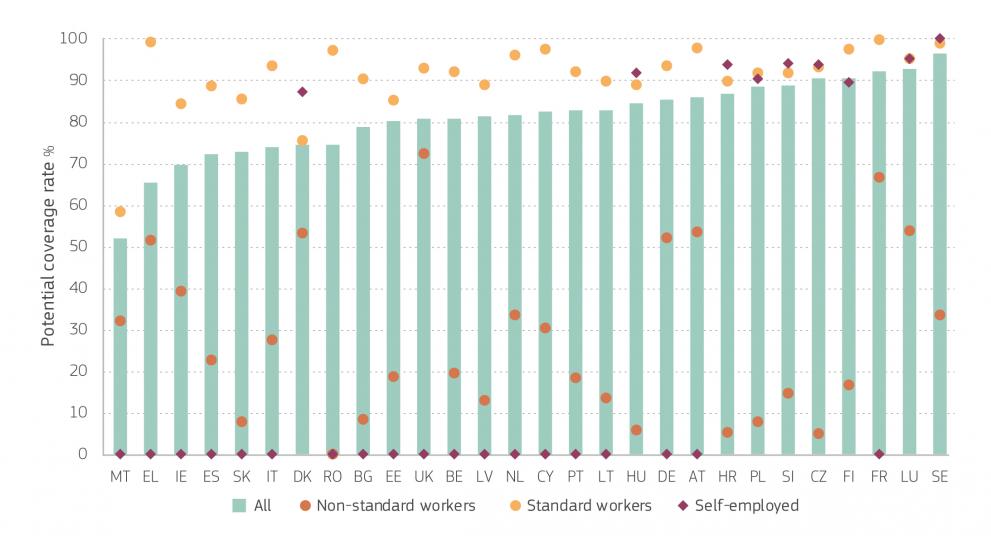Digitalisation and changing work relations require appropriate social protection and taxation systems.
Non-standard forms of work tend to be more common in a digitalised economy.
The report highlights that non-standard workers and self employed are often only partially covered by social security systems.

Note: The figure shows each EU Member State’s potential coverage rate from their existing unemployment insurance for the entire working population (all), non-standard (atypical) workers, standard (typical) workers and the self-employed. Potential coverage measures the proportion of workers who would be covered by unemployment insurance schemes in the event of unemployment, based on their previous work history (months of work during the previous year). Non-standard workers refer to individuals with low work intensity, i.e. with weekly working hours less than one-third of the country median or with working hours equal to the weekly median but less than four months. Standard workers refer to individuals with weekly working hours more than one-third of the country median, and self-employed individuals are those who have self-employment income. Source: JRC Fairness report (2020)
Download the report
Beyond averages - fairness in an economy that works for people
